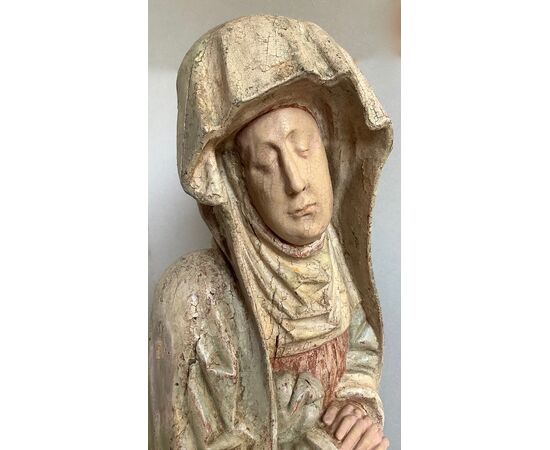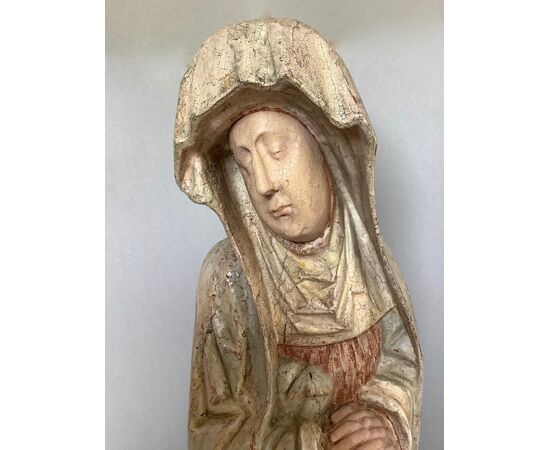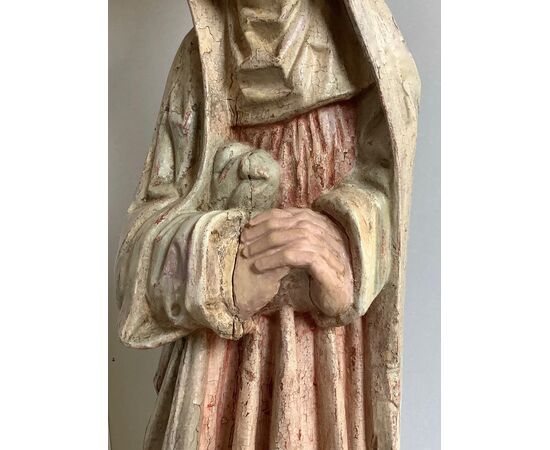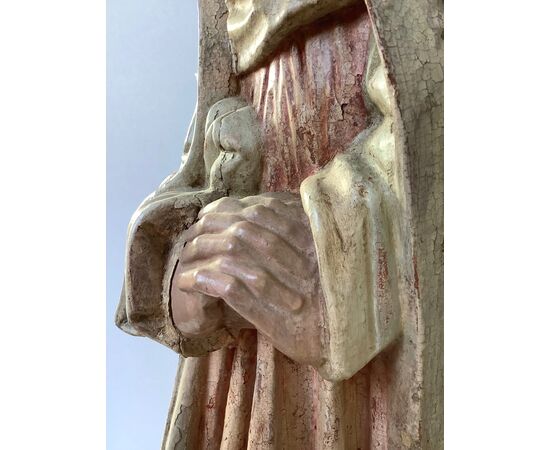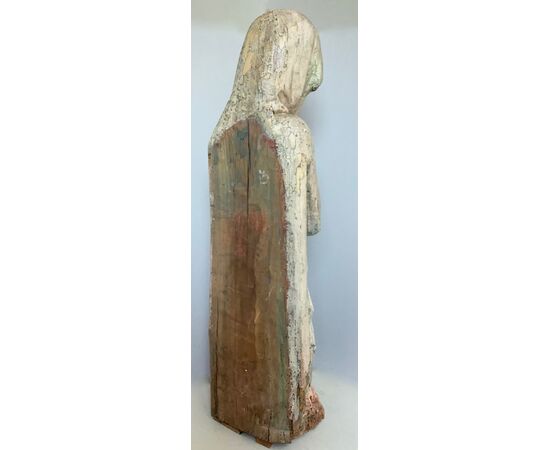Mourning Woman
"Mourning Woman", polychrome wooden sculpture from the last quarter of the 15th century. Measures: height 94 cm, width 28 cm, depth 25 cm. The work must have belonged to the group of a "Lamentation over the Dead Christ", in which it represented a pious woman participating in the collective grief; it is also possible, but less likely, that it was part of a "Crucifixion", representing the sorrowful Madonna at the side of the cross. In favor of the "Lamentation" is the fact that this theme was much more widespread in the last part of the fifteenth century, and also the gaze of the mourning woman turned downwards, as if to fix the body of Christ lying on the ground. The figure, however, occupied the right side of the group, as indicated by the left arm (right for the viewer) not defined beyond the hand that emerges from the mantle, a sign that the mourning woman was not made to be seen from that side. The sculpture is the work of a northern European, most likely German, workshop, as suggested by the style of clothing, with the mantle surmounting the very protruding head covering, making it even higher and more voluminous, and with the typical collar-cap/undercollar. Stylistically, the work is still fully Gothic, in line with the current language in northern Europe at the end of the fifteenth century, where the novelties of the Italian Renaissance will be received much later. The conditions of conservation are intact from a structural point of view, with a single vertical fracture line that runs from the sternum downwards, making itself visible only on the right wrist, and then descends camouflaging itself along the folds of the drapery; the polychromy presents consumption and thinning of the pictorial film, with areas in which traces of the underlying repainting emerge, and others that allow a glimpse of the texture of the wood, without this altering the overall chromatic balance.



